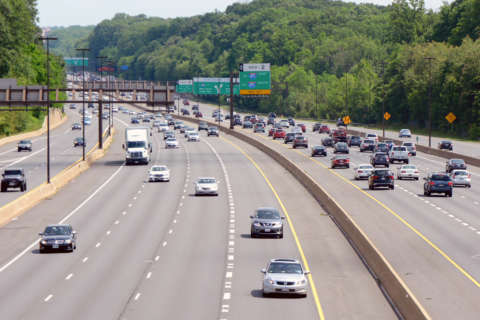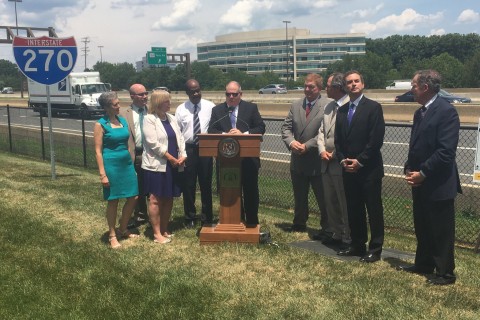POTOMAC, Md. — Standing just off Interstate 270 near the Montrose Road interchange, Maryland Gov. Larry Hogan outlined his $100 million plan to relieve congestion on the busy commuter route.
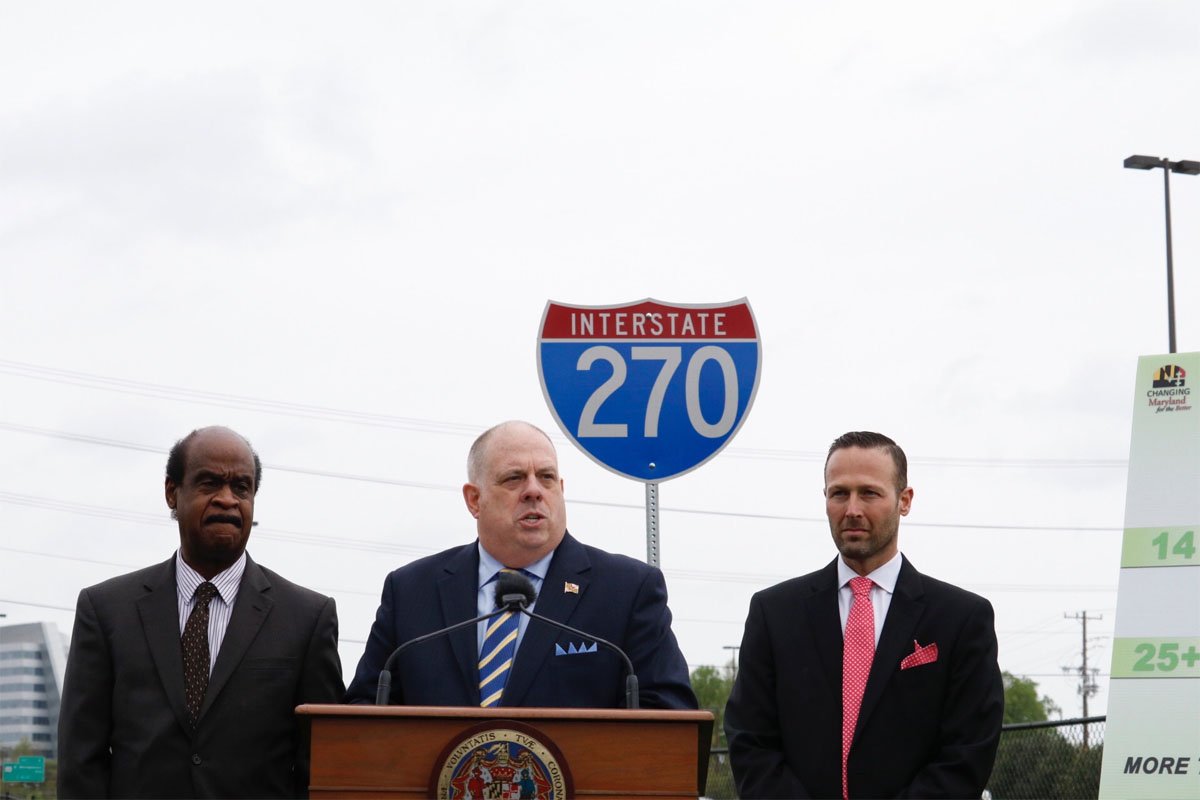
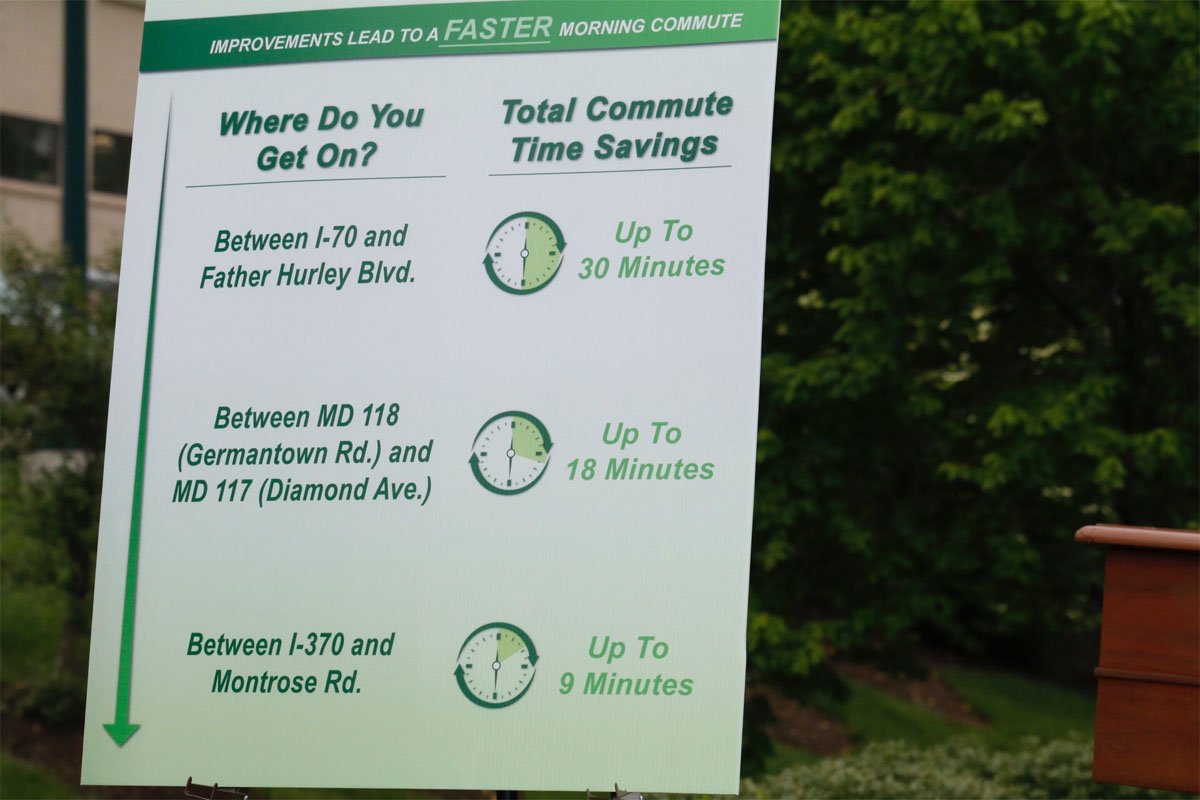
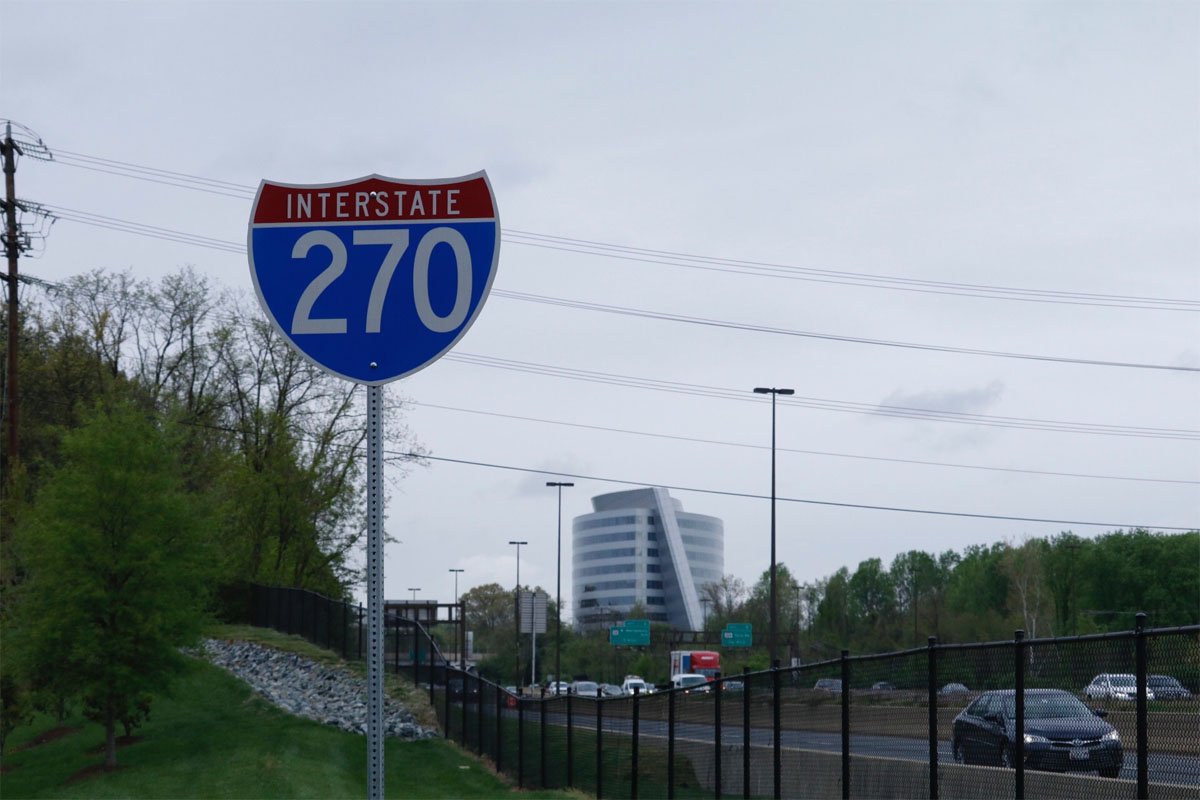
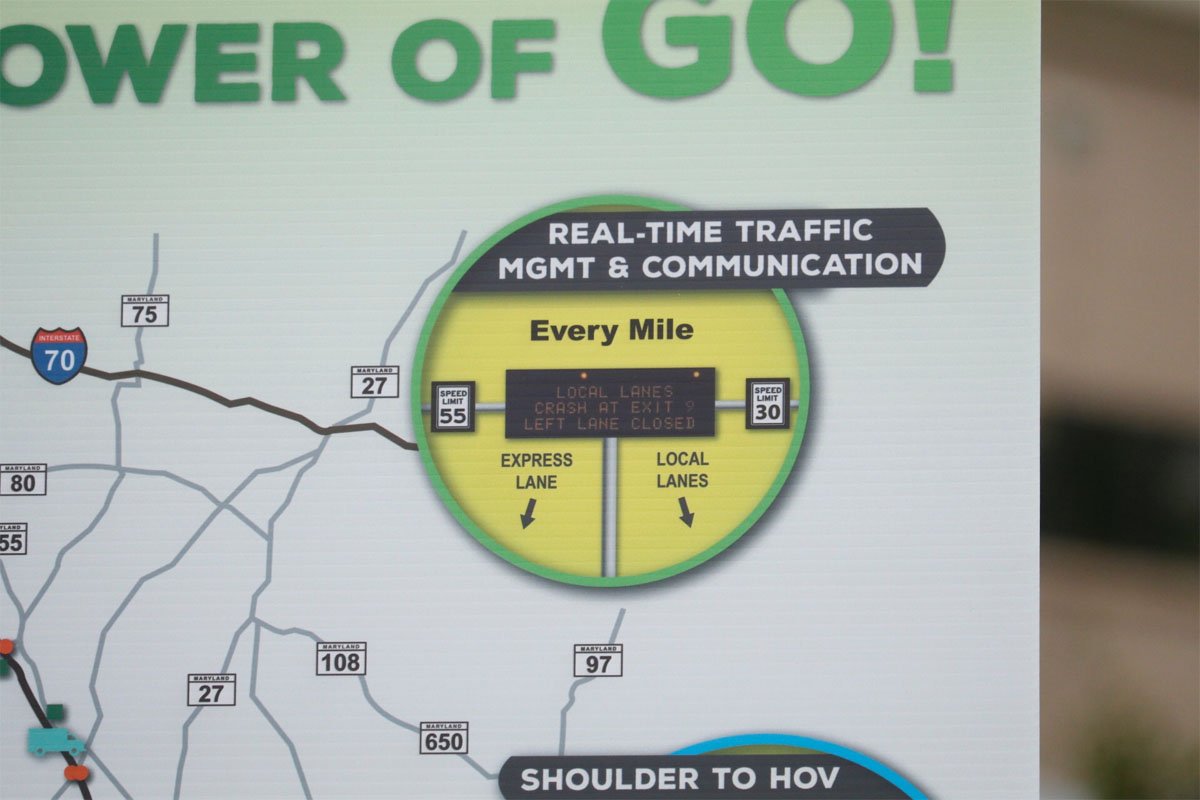
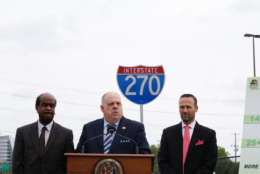
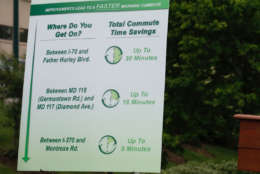
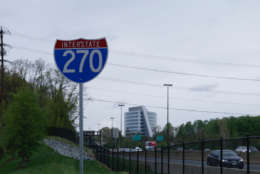

“The project will help break 14 different bottlenecks on 270,” he said.
“It will add 23 new lane miles of roads, more than 25 real-time traffic communication devices and more than 30 intelligent signals.”
According to data supplied by the Maryland State Highway Administration, the plan could save a commuter whose drive starts between I-70 in Frederick and Father Hurley Boulevard in Germantown, as much as 30 minutes during the morning commute.
“That’s 130 more hours each year, or more than three entire workweeks freed up from sitting in traffic,” Hogan said.
Among the changes, adding “metered ramps” — ramps where traffic lights will stop and start traffic in sync with sensors along I-270 to “flush” cars lined up on the on-ramps.
Montgomery County Executive Isiah “Ike” Leggett thanked the governor for the investment represented by the project, but took the opportunity to remind Hogan — who is running for re-election — that in Leggett’s words, Montgomery County is the “economic engine of Maryland.”
Montgomery County Council President Roger Berliner also spoke at the event. On Monday, he told reporters that at first blush, the I-270 project appeared to be a way to relieve congestion “on the cheap.”
Taking the podium after Leggett spoke Wednesday morning, Berliner said, “Governor, investments in Montgomery County are good investments.”
“My hope and the hope of my colleagues is that this the beginning of the story, not the end of the story.”
Berliner has favored installing reversible HOT lanes from Clarksburg all the way down to the American Legion Bridge as a way of easing congestion.
Transit advocates have slammed the plan.
“Widening I-270 was tried 20 years ago, and it failed,” said Ben Ross with the Action Committee for Transit attended Wednesday’s event. “We need real solutions like real MARC trains,” a reference to the Maryland commuter rail system that runs to Western Maryland and Baltimore City out of Union Station.
Disappointed, Ross said, “It sounds like most of the money’s going for asphalt.”
Anthony Garland, international representative with the Amalgamated Transit Union, also attended the event.
“We don’t oppose the governor’s ideas in regards to improving 270, but we would like the governor to incorporate transit in that initiative,” he said.
Garland said that could include adding bus rapid transit to the commuter corridor.
“Public transit is the true friend to relieving some of the congestion here,” he said.
Some of the features of the governor’s plan:
Extending merge lanes at the following points:
- Md. 80 (southbound)
- Md. 109 (southbound)
- Md. 121 to Comus Road (northbound)
Adding exit lane:
- I-270 (southbound) I-370 Exit
Continuous flow lane:
- I-270 SB HOV to I-495 (westbound)
New third local lane:
- Md. 124 to new Watkins Mill Road interchange (northbound)
- Shady Grove Road to South of Gude Drive (southbound)
- Md. 28 to Md. 189 (northbound and southbound)
- Md. 189 to Montrose Road (southbound)


